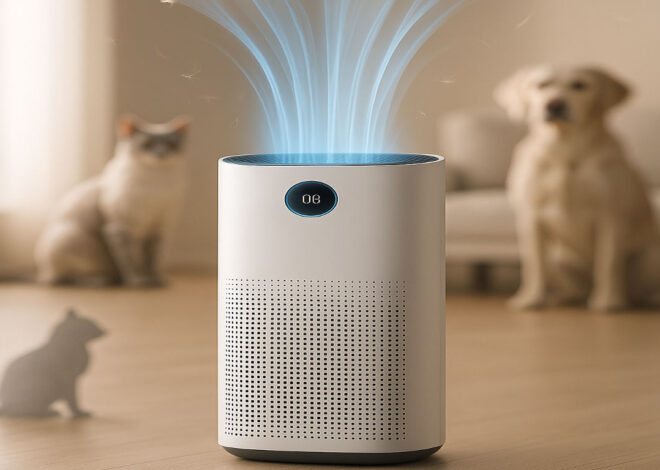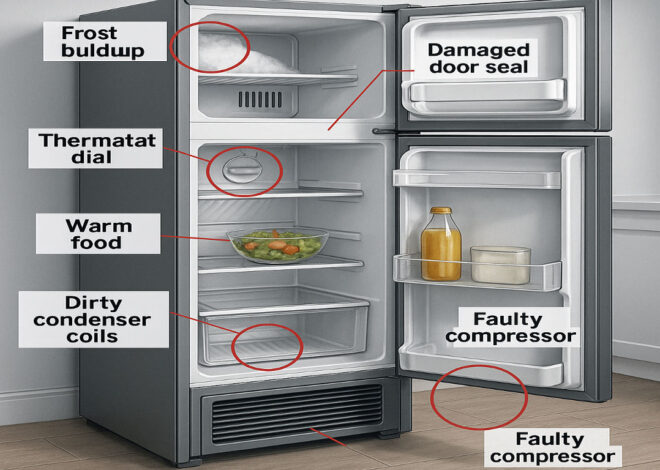
How Can I Improve the Energy Efficiency of My Home?
In today’s world, energy efficiency has become a crucial aspect of modern living. Improving the energy efficiency of your home can lead to significant cost savings and environmental benefits. The term “energy efficiency” refers to the ability to use less energy to perform the same task, ultimately reducing energy consumption and greenhouse gas emissions.
This comprehensive guide will explore various strategies and solutions to help you enhance the energy efficiency of your home, from identifying energy-wasting areas to implementing practical, energy-efficient solutions.
Understanding Energy Efficiency
Energy efficiency is the concept of using less energy to achieve the same or better results. It involves optimizing the way energy is used in various aspects of a home, such as lighting, appliances, insulation, and HVAC systems.
How Energy Efficiency Works Energy efficiency works by minimizing the amount of energy required to perform a specific task or function. This can be achieved through the use of more advanced and efficient technologies, as well as by implementing various energy-saving practices.
Importance of Energy Efficiency in Modern Homes Energy efficiency has become increasingly important in modern homes for several reasons:
- Cost Savings: Improving energy efficiency can lead to significant reductions in energy bills, providing homeowners with long-term financial savings.
- Environmental Benefits: Energy-efficient homes have a smaller carbon footprint, contributing to the overall reduction of greenhouse gas emissions and promoting a more sustainable future.
- Increased Comfort: Energy-efficient homes often have better insulation, temperature control, and air quality, leading to a more comfortable living environment.
- Increased Home Value: Homes with high energy efficiency are generally more attractive to potential buyers, potentially increasing the property’s value.
Common Misconceptions about Energy Efficiency Despite the numerous benefits of energy efficiency, there are still some common misconceptions that need to be addressed:
- Energy-Efficient Homes Are More Expensive: While the initial investment in energy-efficient solutions may be higher, the long-term cost savings often outweigh the upfront costs.
- Energy Efficiency Compromises Comfort: Properly implemented energy-efficient solutions can actually improve the comfort and livability of a home.
- Energy Efficiency Is Only for New Homes: Existing homes can also benefit greatly from energy-efficient upgrades and improvements.
Identifying Energy-Wasting Areas in Your Home
To effectively improve the energy efficiency of your home, it’s essential to identify the areas where energy is being wasted. Some of the most common energy-wasting areas in homes include:
Lighting
Inefficient lighting, such as incandescent bulbs, can be a significant source of energy waste in a home. Replacing these bulbs with more energy-efficient options, such as LED bulbs, can lead to substantial energy savings.
Appliances
Older, inefficient appliances can consume a significant amount of energy, driving up utility bills. Upgrading to Energy Star-certified appliances can significantly improve energy efficiency.
Insulation
Inadequate or poorly installed insulation can lead to heat loss or gain, resulting in increased energy consumption for heating and cooling.
Windows and Doors
Drafty windows and doors can allow air leaks, leading to energy waste and reduced comfort.
HVAC Systems
Inefficient or improperly maintained HVAC systems can consume more energy than necessary, resulting in higher energy bills.
By identifying these energy-wasting areas, you can then focus your efforts on implementing energy-efficient solutions to improve the overall energy efficiency of your home.
Energy-Efficient Solutions for Your Home
To address the various energy-wasting areas in your home, there are numerous energy-efficient solutions you can implement. Let’s explore some of the most effective options:
Lighting
- LED Bulbs: Replace traditional incandescent or compact fluorescent light (CFL) bulbs with energy-efficient LED bulbs, which can use up to 75% less energy and last significantly longer.
- Smart Lighting Systems: Install smart lighting systems that allow you to control and schedule your home’s lighting, optimizing energy usage.
- Dimmer Switches: Use dimmer switches to reduce the amount of energy used by your lighting when full brightness is not required.
Appliances
- Energy-Efficient Appliances: When it’s time to replace your appliances, opt for Energy Star-certified models, which are designed to be more energy-efficient.
- Appliance Maintenance: Regularly maintain and clean your appliances to ensure they operate at optimal efficiency.
- Appliance Replacement: Consider replacing older, inefficient appliances with newer, more energy-efficient models, even if they are still functioning.
Insulation
- Types of Insulation: Explore different types of insulation, such as fiberglass, cellulose, or spray foam, and choose the option that best suits your home’s needs.
- Insulation Installation: Ensure that your insulation is properly installed to maximize its effectiveness in preventing heat loss or gain.
- Insulation Maintenance: Regularly inspect and maintain your home’s insulation to address any gaps or degradation.
Windows and Doors
- Energy-Efficient Windows: Install windows with high-performance features, such as double-glazing, low-E coatings, and argon gas fills, to improve their energy efficiency.
- Energy-Efficient Doors: Choose doors with high-quality weatherstripping and insulation to minimize air leaks.
- Window and Door Maintenance: Regularly maintain your windows and doors, addressing any cracks, gaps, or other issues that may compromise their energy efficiency.
HVAC Systems
- Energy-Efficient HVAC Systems: When it’s time to replace your HVAC system, opt for high-efficiency models that are designed to use less energy while maintaining comfort.
- HVAC Maintenance: Regularly maintain your HVAC system, including cleaning or replacing filters, to ensure it operates at peak efficiency.
- HVAC Replacement: Consider replacing older, inefficient HVAC systems with newer, more energy-efficient models, even if the current system is still functioning.
Additional Energy-Efficient Solutions
- Solar Panels: Install solar panels to generate renewable energy and reduce your reliance on the grid.
- Energy-Efficient Water Heaters: Choose an energy-efficient water heater, such as a tankless or heat pump water heater, to reduce energy consumption.
- Energy-Efficient Washing Machines: Opt for Energy Star-certified washing machines, which use significantly less water and energy compared to traditional models.
Implementing Energy-Efficient Solutions
To successfully implement energy-efficient solutions in your home, follow these steps:
- Budgeting: Determine your budget for energy-efficient upgrades and prioritize the most impactful improvements.
- Prioritizing: Focus on the areas that offer the greatest potential for energy savings and return on investment.
- Professional Assistance: Consider hiring professional contractors or energy auditors to help identify and implement the most effective energy-efficient solutions for your home.
Common Challenges and Solutions
- Budget Constraints: Look for government incentives, rebates, or financing options to offset the initial costs of energy-efficient upgrades.
- Space Limitations: Explore compact or space-saving energy-efficient solutions, such as mini-split HVAC systems or tankless water heaters.
- Technical Difficulties: Consult with professionals who can provide guidance and expertise to ensure a successful implementation of energy-efficient solutions.
Conclusion
Improving the energy efficiency of your home can lead to significant cost savings and environmental benefits. By understanding the principles of energy efficiency, identifying energy-wasting areas, and implementing a range of energy-efficient solutions, you can transform your home into a more sustainable and comfortable living space.
Remember, every small step towards energy efficiency can make a big difference. Start by addressing the low-hanging fruit, such as upgrading to LED lighting and Energy Star-certified appliances, and then gradually work your way towards more comprehensive energy-efficient upgrades. With a little effort and the right strategies, you can take control of your home’s energy consumption and enjoy the long-term rewards of improved energy efficiency.


